How to Propagate Succulents
Succulents are not just trendy houseplants; they are also incredibly rewarding to propagate! If you've ever admired a friend's lush succulent garden and thought, "I want that!" then you're in the right place. Propagating succulents is like creating your own little green paradise, and the best part? It's easier than you might think! In this article, we will explore various methods for propagating these delightful plants, providing you with step-by-step guidance and essential tips to ensure your propagation journey is a success.
First off, let's talk about why you should consider propagating succulents. Not only does it allow you to expand your plant collection without spending a dime, but it also gives you the opportunity to share your passion for gardening with friends and family. Imagine gifting a beautifully propagated succulent to a loved one! Plus, watching a tiny leaf or stem grow roots and eventually flourish into a full plant is nothing short of magical. So, are you ready to dive into the world of succulent propagation? Let's get started!
Succulent propagation involves creating new plants from existing ones, and it’s a fantastic way to boost your collection. The beauty of succulents lies in their resilience and adaptability, making them perfect candidates for propagation. By understanding the fundamental concepts and benefits of succulent propagation, you can ensure a thriving collection that not only looks good but also brings joy to your life.
There are several methods to propagate succulents, each with its own set of techniques and requirements. Whether you're a seasoned gardener or a complete newbie, you’ll find that with a little patience and care, you can successfully grow new plants from your existing ones. The thrill of seeing new growth emerge from a simple leaf or cutting is an experience that every plant lover should enjoy!
Selecting the appropriate succulent species is crucial for successful propagation. Some succulents are more forgiving and easier to propagate than others. For instance, Jade plants and echeverias are popular choices among beginners due to their hardiness and ability to root easily. On the other hand, Haworthias and aloe vera can also be propagated but may require a bit more attention.
When choosing a succulent to propagate, consider the following factors:
- Growth Habit: Some succulents grow upright, while others spread out. Understanding their growth habit can help you decide how to propagate them effectively.
- Leaf Structure: Some succulents have thicker leaves that store more water, making them ideal for propagation.
- Health of the Parent Plant: Always choose a healthy parent plant for propagation; this increases the chances of success.
Leaf cuttings are a common method for propagating succulents. It’s like taking a little piece of life and giving it a chance to grow! To start, you’ll want to select a healthy leaf from your succulent. The process is simple, but there are a few best practices to keep in mind.
Proper preparation of the leaf cutting is essential for successful propagation. First, gently twist the leaf off the stem, ensuring you get a clean break. Avoid cutting it with scissors, as this can damage the leaf and hinder root development. Once you have your leaf, let it sit in a dry place for a few days to allow the cut end to callous over. This step is crucial as it helps prevent rot when you plant it.
Once the leaf is calloused, it’s time to plant it! Use a well-draining soil mix, ideally one designed for cacti and succulents. Place the leaf on top of the soil, and lightly mist it with water. Avoid burying the leaf as it needs air circulation. Keep the soil slightly moist but not soggy, and soon enough, you’ll see tiny roots emerging!
Stem cuttings offer another effective propagation method. This technique is especially useful for succulents that have a more robust stem structure. To take stem cuttings, simply snip a healthy section of the stem, ideally around 3-4 inches long. Just like with leaf cuttings, allow the cut end to callous before planting it in soil.
If you’re looking for an alternative method, water propagation is a fun way to root succulents! This method allows you to see the roots develop, which can be quite satisfying. However, keep in mind that not all succulents thrive in water, so choose wisely!
To set up for water propagation, you’ll need a clean jar filled with water. Place the cutting in the water, ensuring that the cut end is submerged while the leaves remain above the water line. Change the water every week to keep it fresh, and soon enough, you’ll notice roots forming. It’s like watching a tiny miracle unfold!
After successful rooting, transitioning succulents from water to soil is critical. Once the roots are about 2-3 inches long, it’s time to plant your succulent in well-draining soil. Gently remove the cutting from the water, being careful not to damage the roots, and plant it in a pot with succulent soil. Water it lightly, and watch as your new plant begins its life in the soil!
Q: How long does it take for succulents to propagate?
A: Generally, it can take anywhere from a few weeks to a couple of months for succulents to root and start growing, depending on the method and the species.
Q: Can I propagate succulents in any season?
A: While succulents can be propagated year-round, spring and summer are the best seasons due to increased light and warmth, which promote faster growth.
Q: What should I do if my succulent cuttings start to rot?
A: If your cuttings are rotting, it’s essential to remove them from the soil or water immediately. Allow them to dry out and callous again before attempting to propagate them once more.
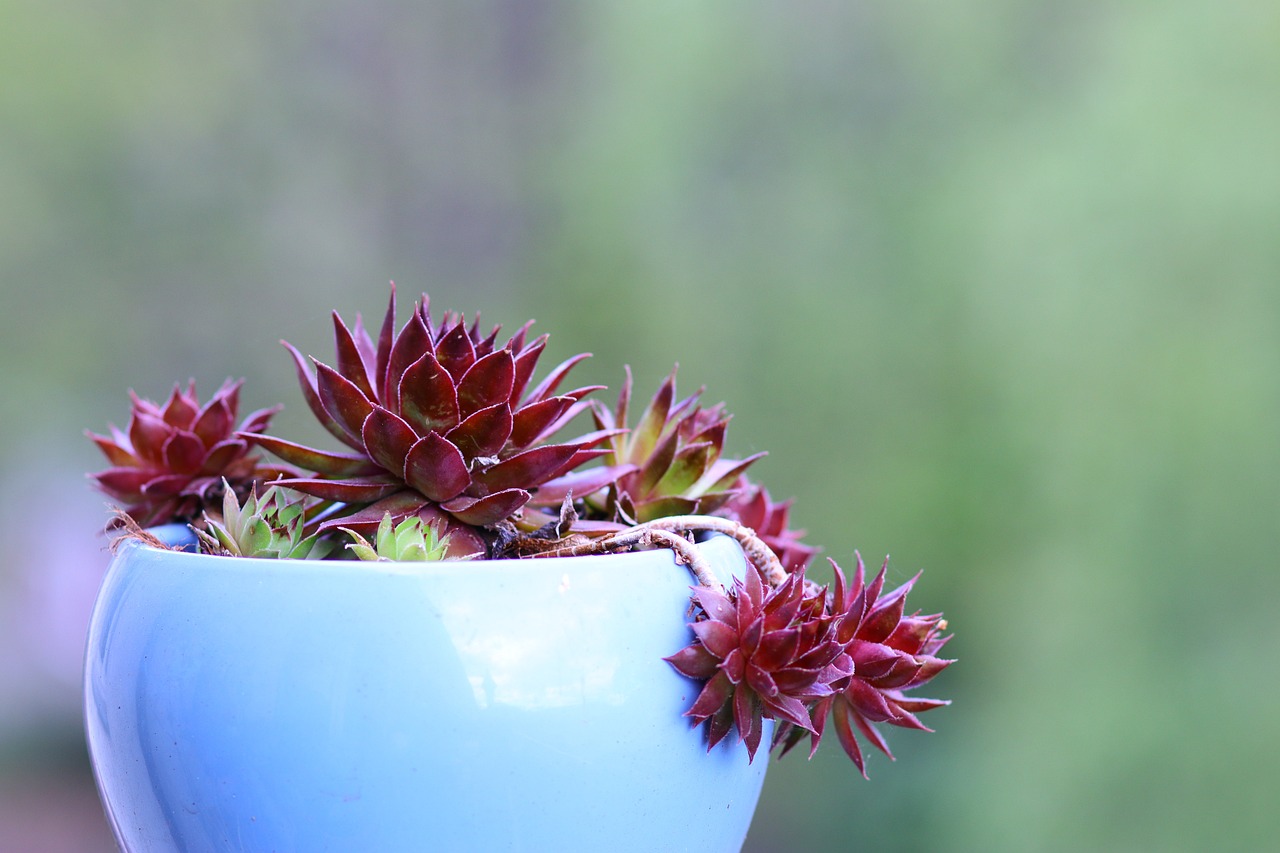
Understanding Succulent Propagation
Succulent propagation is an exciting journey that allows plant lovers to expand their green family without spending a fortune. Imagine being able to create new plants from just a single leaf or stem of your favorite succulent. It’s like having your own little plant factory right at home! This process not only helps you grow your collection but also gives you a deeper connection to your plants. By understanding how succulents propagate, you can enjoy a thriving garden filled with vibrant colors and unique shapes.
At its core, succulent propagation involves taking a part of an existing plant—be it a leaf, stem, or even a root—and encouraging it to grow into a new, independent plant. This method is not just economical; it’s also incredibly satisfying. You get to witness the miracle of life unfold right before your eyes. Plus, it’s a fantastic way to share your love of plants with friends and family. Imagine gifting them a beautiful succulent that you nurtured from a tiny cutting!
There are several benefits to propagating succulents. For starters, it allows you to multiply your plants without the need for seeds, which can be tricky and time-consuming. Additionally, propagating succulents can help rejuvenate older plants that may not be thriving as they once did. By taking cuttings from healthy parts of the plant, you can ensure that the new growth is strong and vibrant. This process can also be a great way to experiment with different types of succulents, expanding your gardening skills and knowledge.
When it comes to succulent propagation, there are a few key methods to consider. Each method has its unique charm and can yield fantastic results. Here’s a quick overview:
| Propagation Method | Description |
|---|---|
| Leaf Cuttings | Taking a leaf from the plant and allowing it to root. |
| Stem Cuttings | Cutting a stem and planting it to grow roots. |
| Water Propagation | Rooting cuttings in water before transferring to soil. |
It’s essential to understand the specific needs of the succulent species you are working with, as different varieties may have varying requirements for successful propagation. Some succulents thrive in dry conditions, while others may need a bit more moisture. By familiarizing yourself with these needs, you can increase your chances of success and enjoy a bountiful collection of beautiful plants.
In summary, succulent propagation is a rewarding endeavor that not only enhances your plant collection but also deepens your appreciation for nature. Whether you choose to propagate through leaf cuttings, stem cuttings, or even water propagation, the key is to be patient and attentive to your plants' needs. So, gather your tools, choose your favorite succulent, and let the propagation adventure begin!
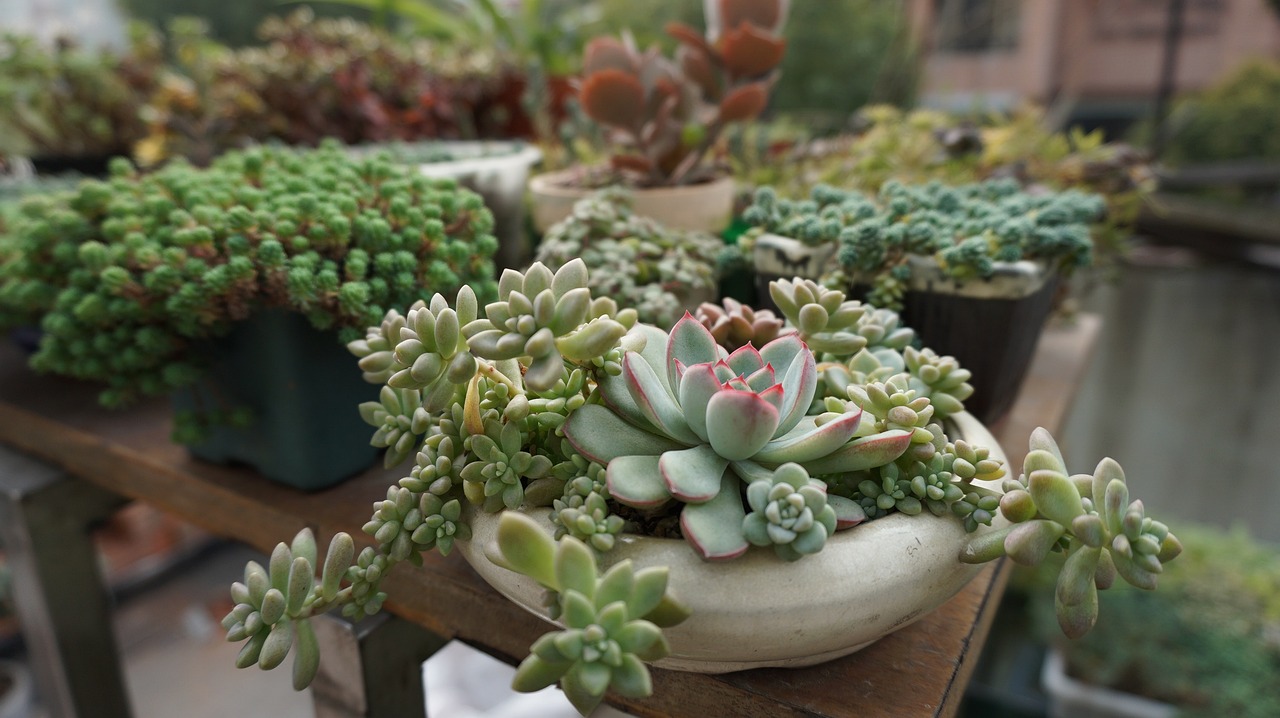
Choosing the Right Succulent
When it comes to propagating succulents, one of the most crucial steps is selecting the right species. Not all succulents are created equal, and some varieties are more forgiving and easier to propagate than others. Imagine trying to bake a cake without knowing the right ingredients; similarly, choosing the wrong succulent can lead to frustration and failure. So, let's dive into the world of succulents and explore which ones are best suited for propagation!
First off, you might want to consider popular succulent varieties that are known for their robust nature and ease of propagation. Some of the favorites among succulent enthusiasts include:
- Jade Plant (Crassula ovata): This succulent is not only beautiful but also incredibly easy to propagate through leaf and stem cuttings. It’s like the friend who always has your back!
- Hen and Chicks (Sempervivum): Known for its charming rosettes, this plant produces offsets that can be easily separated and replanted. It's like having a family reunion, where everyone gets to grow together!
- String of Pearls (Senecio rowleyanus): With its unique trailing appearance, this succulent can be propagated from individual beads. It’s a fun and creative way to expand your collection.
Now, while these succulents are popular, it’s essential to understand their specific requirements. For instance, the Jade Plant thrives in bright light and well-draining soil, while Hen and Chicks prefer cooler temperatures and can tolerate some neglect. Knowing these details is like having a roadmap for your succulent journey, guiding you to success!
Moreover, consider the climate and environment where you live. Some succulents are more suited to arid conditions, while others might flourish in humid environments. If you live in a particularly dry area, you might want to focus on succulents that can handle those conditions without wilting away. On the flip side, if humidity is your everyday companion, look for varieties that can thrive in such an environment.
In addition, think about your personal style and how these plants will fit into your home or garden. Are you looking for a statement piece, or do you want a subtle addition to your decor? The aesthetics of succulents can vary widely, from bold and sculptural forms to delicate and trailing varieties. Choose what resonates with you, as this will make the propagation process even more rewarding.
Finally, don't forget to check the health of the parent plant before taking cuttings. A healthy plant is like a well of vitality, ensuring that your new propagations have all the nutrients they need to thrive. Look for signs of pests or diseases, and only take cuttings from robust specimens. This step is crucial because starting with a healthy foundation will lead to a more successful propagation experience.
In summary, choosing the right succulent for propagation involves considering various factors, including the species' ease of propagation, environmental needs, and your personal preferences. By paying close attention to these details, you'll set yourself up for a flourishing succulent garden that brings joy and beauty into your life.

Leaf Cuttings
Leaf cuttings are one of the most popular and effective methods for propagating succulents, and for good reason! This technique allows you to create new plants from a single leaf, making it a cost-effective way to expand your succulent collection. The process is quite simple and can be incredibly rewarding, as it gives you the chance to watch your new plants grow from just a small piece of the original. But before you dive in, let's break down the steps to ensure your success.
First and foremost, it's essential to choose the right succulent for leaf cuttings. Not all succulents propagate well this way. Some of the best candidates include Jade plants, Hen and Chicks, and String of Pearls. These varieties tend to root easily from leaves, but always do a little research to confirm that your specific succulent is suitable for this method.
Once you've selected your succulent, the next step is to take your leaf cuttings. Use a clean, sharp knife or scissors to make a clean cut. Aim for a healthy, plump leaf that shows no signs of damage or disease. After cutting, it's crucial to allow the leaf to callous over for a few days. This process helps prevent rot when the leaf is planted. Place the leaf in a dry, shaded area and let it sit for about 3-7 days, depending on the humidity in your environment.
After the leaf has formed a callous, it’s time to plant it. Here’s where the magic begins! You’ll want to use a well-draining soil mix, ideally a cactus or succulent mix. If you’re feeling adventurous, you can even create your own mix by combining potting soil with sand or perlite in a 1:1 ratio. This ensures that excess moisture can escape, reducing the risk of root rot.
When planting the leaf, simply lay it flat on the soil surface. Gently press it down so that it makes contact with the soil but avoid burying it. Water the soil lightly, ensuring it’s damp but not soggy. Overwatering is a common mistake that can lead to failure, so it’s better to err on the side of caution. Place the pot in a location that receives bright, indirect sunlight, as this will encourage healthy growth without scorching the leaf.
As time goes on, you’ll notice tiny roots beginning to sprout from the base of the leaf, and eventually, you may see new leaves emerging as well. This is a clear indication that your propagation efforts are paying off! Patience is key here; it can take a few weeks to a couple of months for roots to develop fully. During this time, continue to keep the soil lightly moist and provide adequate light.
In summary, propagating succulents through leaf cuttings is not only an enjoyable process but also a fantastic way to expand your collection without spending a dime. Just remember to choose the right succulent, allow the leaf to callous, use the proper soil mix, and be patient as you watch your new plants thrive. Happy gardening!
- How long does it take for leaf cuttings to root? - It can take anywhere from a few weeks to a couple of months, depending on the succulent species and environmental conditions.
- Can I propagate any succulent using leaf cuttings? - Not all succulents propagate well from leaves. It's best to research specific varieties to find the most suitable ones.
- What should I do if my leaf cutting starts to rot? - If you notice rot, remove the affected leaf immediately and check your watering practices. Ensure that the soil is well-draining and that you are not overwatering.
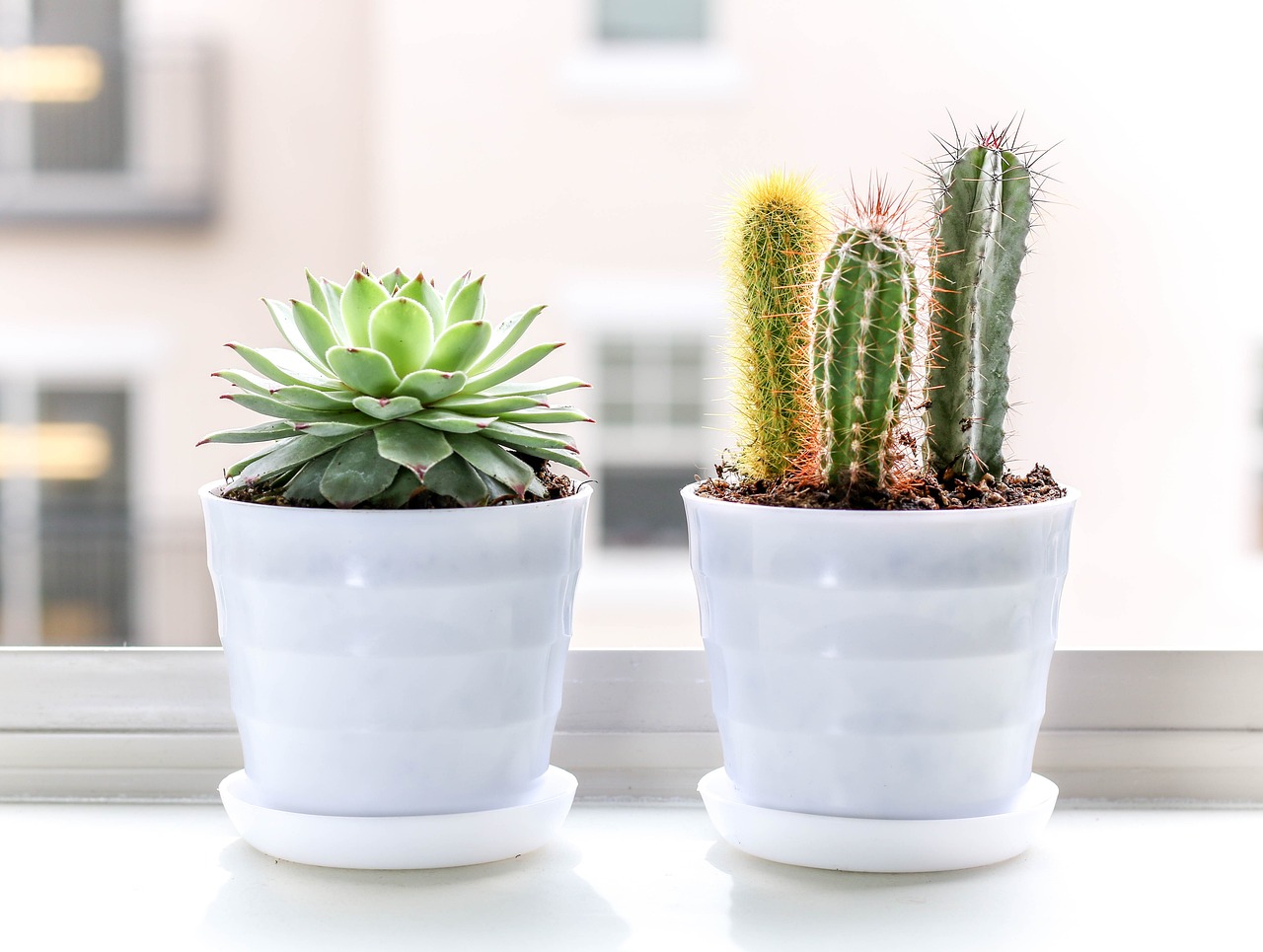
Preparing the Leaf
When it comes to propagating succulents through leaf cuttings, proper preparation is your first step toward success. Think of it as laying the foundation for a sturdy building; without a solid base, everything that follows could crumble. The process begins by selecting a healthy leaf from a mature succulent. Look for leaves that are plump and vibrant, as these contain the moisture and nutrients necessary for new growth. Avoid any leaves that show signs of damage or disease, as these can hinder the propagation process.
Once you've chosen the perfect leaf, it's time to make the cut. Using a sharp, clean knife or scissors, gently twist or cut the leaf away from the stem. Be sure to make a clean cut, as jagged edges can lead to rot. After cutting, allow the leaf to callous for a few days in a dry, shaded area. This step is crucial because it helps to seal the cut end, preventing moisture loss and reducing the risk of fungal infections. Think of it like letting a wound heal before exposing it to the elements.
During the callousing period, keep an eye on your leaf. It should begin to dry out and form a protective layer over the cut surface. Typically, this process takes about three to five days, depending on the humidity and temperature of your space. Once the leaf has developed a callous, it’s ready to be planted. At this point, you can prepare your potting mix, ideally using a well-draining soil that allows for air circulation around the roots. A mixture of potting soil and perlite or sand works wonders for succulents.
Now, you might be wondering, "How do I know when my leaf is ready to plant?" A good rule of thumb is to look for a firm, dry edge on the cut surface. If it feels moist or sticky, give it a little more time to callous. Once you’re confident that your leaf is ready, it’s time to move on to the planting stage. Remember, patience is key in this process, and taking the time to prepare your leaf properly can make all the difference in your succulent propagation journey.
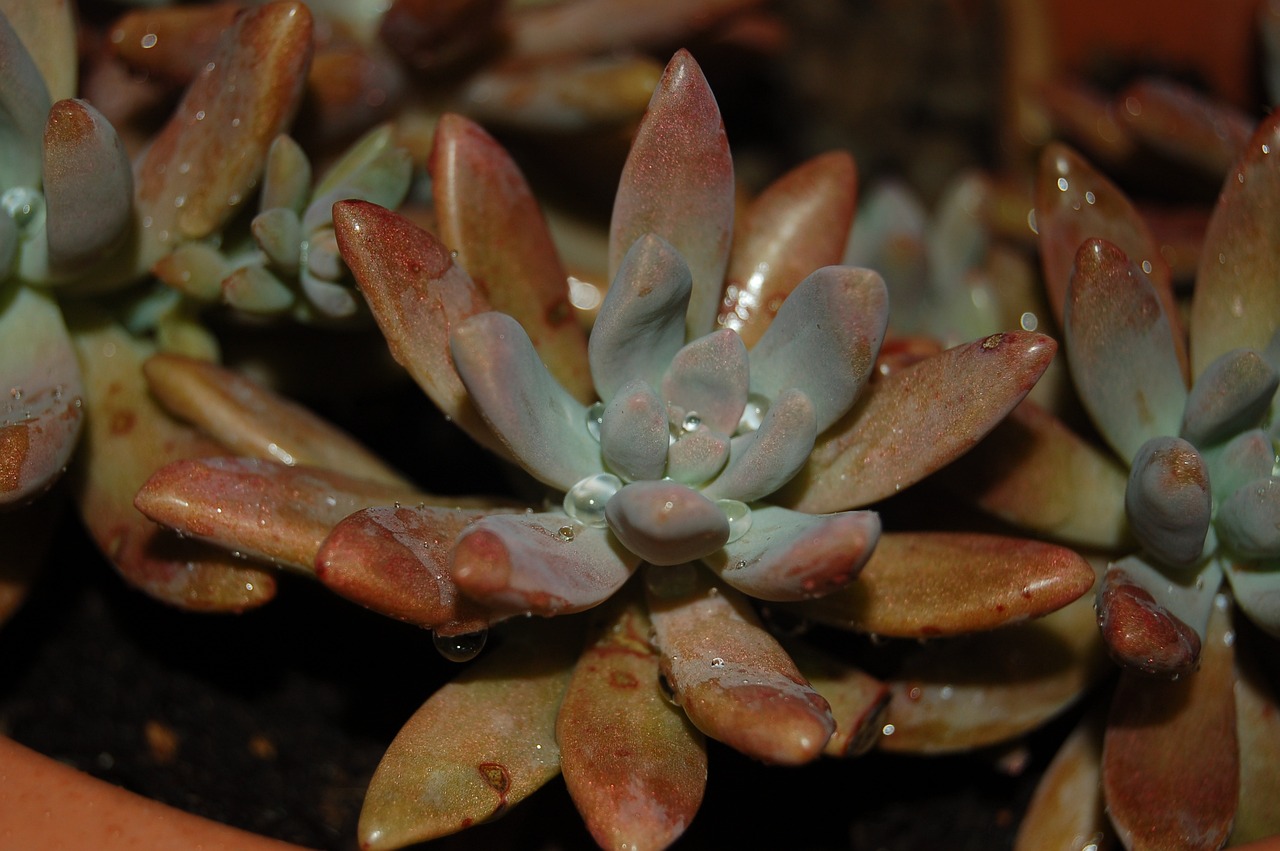
Planting the Leaf Cutting
Once you have prepared your leaf cutting, the next crucial step is planting it correctly. This phase is where the magic happens, transforming your little leaf into a thriving new succulent. The first thing you'll need to consider is the type of soil you use. A well-draining soil mix is essential for succulents, as they are prone to rot if left in overly moist conditions. You can either purchase a pre-made succulent soil mix or create your own by combining potting soil with perlite or sand to enhance drainage.
When it comes to the actual planting process, start by selecting a small pot with drainage holes. This is key to preventing water from pooling at the bottom, which can lead to root rot. Fill the pot with your chosen soil mix, leaving about an inch of space at the top. Now, gently place the leaf cutting on the soil surface, ensuring that the cut end is in contact with the soil. You don’t need to bury the leaf; in fact, it's better to let it sit on top of the soil, as this allows it to callous over and reduces the risk of rot.
After positioning the leaf cutting, it’s time to give it a little drink. Use a spray bottle to mist the soil lightly, ensuring it's moist but not soggy. Overwatering at this stage can be detrimental, so it's better to err on the side of caution. Place your pot in a warm, bright location, but avoid direct sunlight initially, as this can scorch the leaf. Instead, filtered light is ideal for encouraging root development without stressing the plant.
As your leaf cutting begins to establish roots, it’s important to monitor the moisture level of the soil. Allow the top inch of soil to dry out between waterings. This practice mimics the natural environment of succulents, where they often experience dry spells. With a little patience and care, you’ll soon notice tiny roots sprouting from the base of the leaf, followed by new growth emerging. This is a sign that your propagation efforts are paying off!
To summarize, here are the key steps for planting your leaf cutting:
- Choose a small pot with drainage holes.
- Use a well-draining soil mix.
- Place the leaf cutting on the soil surface, cut end down.
- Mist the soil lightly with water.
- Keep the pot in a warm, bright area with indirect sunlight.
- Allow the soil to dry out between waterings.
By following these steps, you’ll set your succulent up for success, paving the way for a beautiful new addition to your plant family. Remember, patience is key in this process, so don’t rush it. In time, you’ll witness the remarkable transformation from a simple leaf to a flourishing succulent!
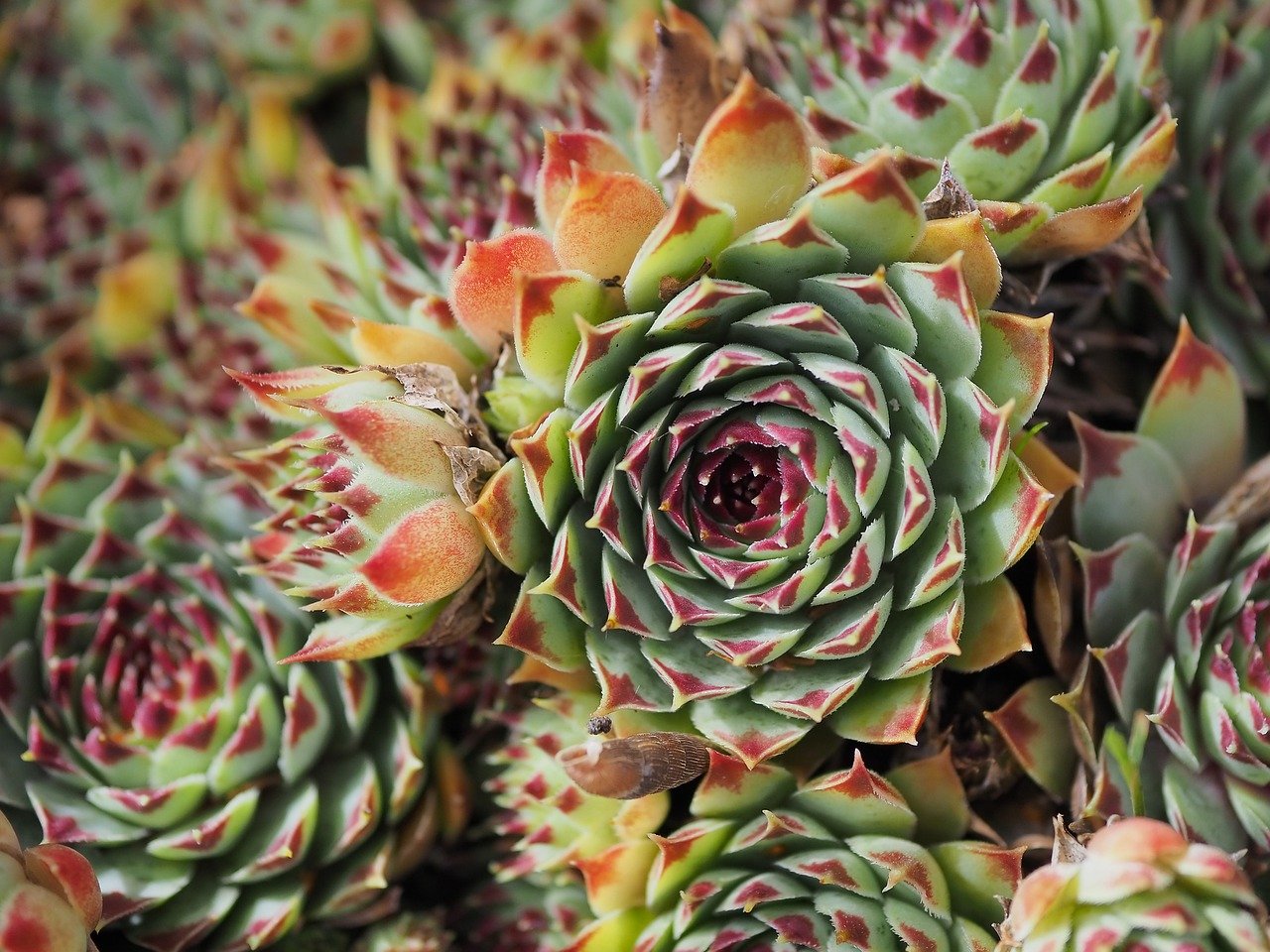
Stem Cuttings
Propagating succulents through is a fantastic method that many plant enthusiasts swear by. It’s like giving your succulent a fresh start, allowing it to grow into a brand new plant. This method is particularly effective for succulent species that have thick stems, such as Jade Plants and String of Pearls. The beauty of stem cuttings lies in their simplicity; with just a few steps, you can create new life from your existing plants. So, let’s dive into the process!
To begin, you’ll want to select a healthy stem from your succulent. Look for a stem that is firm and free from any signs of disease or pests. Once you’ve chosen the right stem, it’s time to make your cut. Using a clean, sharp knife or scissors, cut a section of the stem that is about 3 to 4 inches long. Make sure to cut just below a leaf node, as this is where new roots will emerge. Think of it as giving your succulent a haircut—just the right trim can lead to a fuller, healthier plant!
After you’ve made your cut, it’s crucial to let the cutting callous over. This process usually takes about 1 to 3 days. During this time, place the cutting in a dry, shaded area. Allowing the cut end to dry out helps prevent rot when you eventually plant it. It’s like letting a wound heal before applying a bandage; a little patience goes a long way in ensuring the success of your propagation.
Once the cutting has calloused, it’s time for the exciting part—planting! Use a well-draining soil mix, ideally one designed for succulents. You can create your own mix by combining regular potting soil with sand or perlite to improve drainage. Fill a small pot with this mix, and gently insert the calloused end of the stem cutting into the soil, burying it about an inch deep. Give it a light pat to secure it in place, and then water it lightly. Remember, overwatering is a common mistake; succulents prefer to be on the dry side.
Now that your cutting is planted, place the pot in a warm, bright location but out of direct sunlight. Too much sun can stress the cutting while it’s trying to establish roots. Think of it as putting a baby in a cozy crib—comfort is key! Over the next few weeks, keep an eye on your cutting. You might not see immediate growth, but be patient. The roots will be developing underground, and soon enough, you’ll notice new leaves sprouting.
In summary, propagating succulents through stem cuttings is not only easy but also incredibly rewarding. With the right tools and a little bit of care, you can expand your succulent collection in no time. Just remember to choose a healthy stem, allow for callousing, use the right soil, and provide the ideal conditions for growth. Before long, you’ll have a thriving new plant that you can cherish!
- How long does it take for stem cuttings to root? Generally, stem cuttings can take anywhere from 2 to 4 weeks to develop roots, depending on the succulent type and environmental conditions.
- Can I propagate succulents in water? Yes, some succulents can be propagated in water, but it’s often more successful to use soil for stem cuttings.
- What should I do if my cutting rots? If you notice any signs of rot, remove the cutting from the soil, let it dry out completely, and try again with a fresh cut.
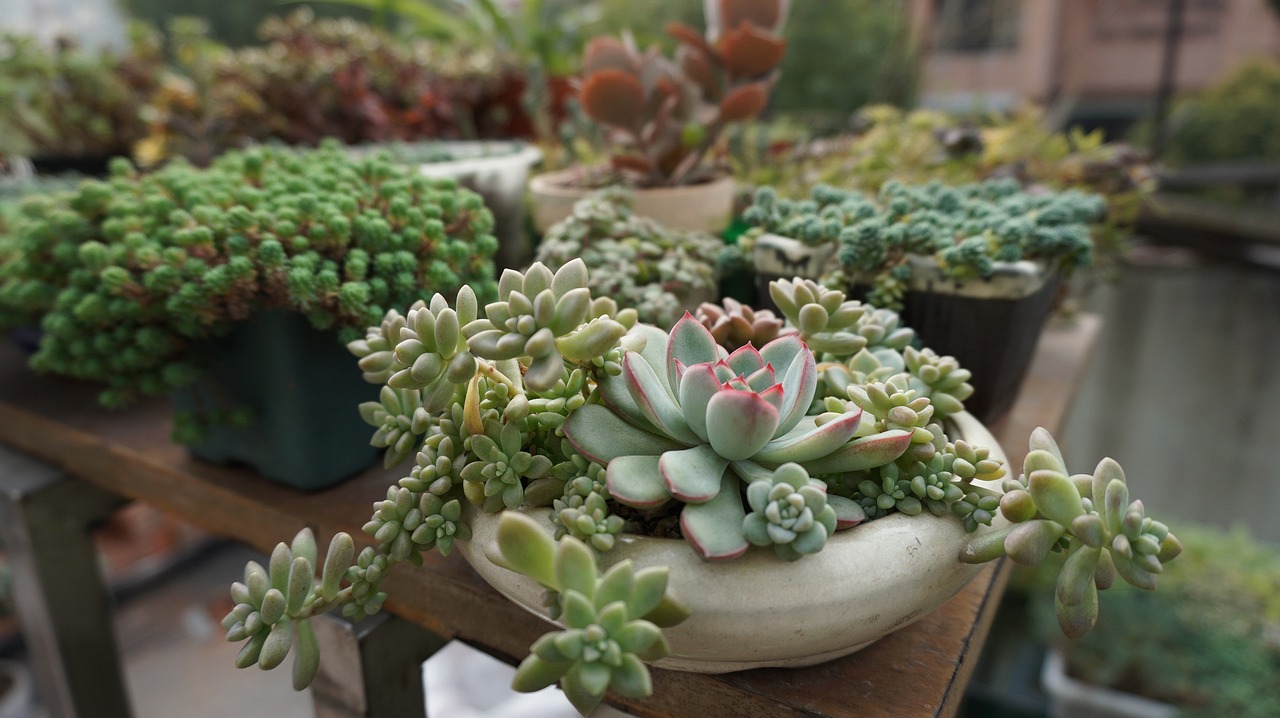
Water Propagation
Water propagation is an intriguing and effective method for growing succulents from cuttings. Imagine taking a small piece of your favorite succulent, placing it in water, and watching it transform into a new plant right before your eyes! This method not only allows you to see the roots develop but also provides a unique opportunity to care for your plants in a different way. However, it’s essential to understand that while water propagation can be rewarding, it also comes with its own set of challenges.
To successfully propagate succulents in water, you need to create an environment that mimics their natural conditions. Start by selecting healthy cuttings from your existing succulents. Look for stems or leaves that are plump and free from any blemishes or pests. The best candidates for water propagation are typically thick-leaved varieties, such as Jade Plants or String of Pearls, as they tend to root more easily. Once you have your cuttings, it's time to prepare them for their new watery home.
Setting up for water propagation requires a few materials, including a clean glass container, fresh water, and of course, your succulent cuttings. It's crucial to use a clear container so you can monitor the growth of the roots. Fill the container with water, ensuring that only the bottom part of the cutting is submerged. Avoid placing the leaves in the water, as this can lead to rot. Instead, let the leaves rest above the water line. This method will allow the cutting to absorb moisture while preventing any damage to the leaves.
As your cuttings sit in water, it’s important to change the water every few days to keep it fresh and oxygenated. Stagnant water can lead to algae growth or bacteria, which can hinder root development. After about two to three weeks, you should start to see tiny roots emerging from the cuttings. This is a thrilling moment, as it signifies that your succulent is on its way to becoming a fully-fledged plant!
Once the roots are about 1-2 inches long, it's time to transition your succulents from water to soil. This step is critical, as succulents are not designed to thrive in water indefinitely. To make the transition, prepare a well-draining soil mix—ideally, a cactus or succulent potting mix. Gently remove the cutting from the water, taking care not to damage the delicate roots. Plant the cutting in the soil, ensuring that the roots are well-covered while the leaves remain above the soil line. Water the newly potted cutting lightly to help it settle into its new environment.
In summary, water propagation can be a fun and visually rewarding way to grow new succulents. By following the right steps and providing the necessary care, you can successfully propagate your favorite plants and expand your collection. Remember, patience is key! Each succulent has its own unique growth pattern, so don’t be discouraged if some take longer than others to root. Keep an eye on your cuttings, and soon enough, you’ll have a thriving new plant to enjoy.
- Can all succulents be propagated in water? Not all succulents are suitable for water propagation. Thick-leaved varieties generally root better in water.
- How long does it take for roots to develop? It usually takes 2-3 weeks for roots to start forming, but this can vary based on the type of succulent and environmental conditions.
- What should I do if my cutting starts to rot? If you notice any signs of rot, remove the cutting from the water immediately. Trim away the rotten parts and allow the cutting to callous over before trying to propagate it again.
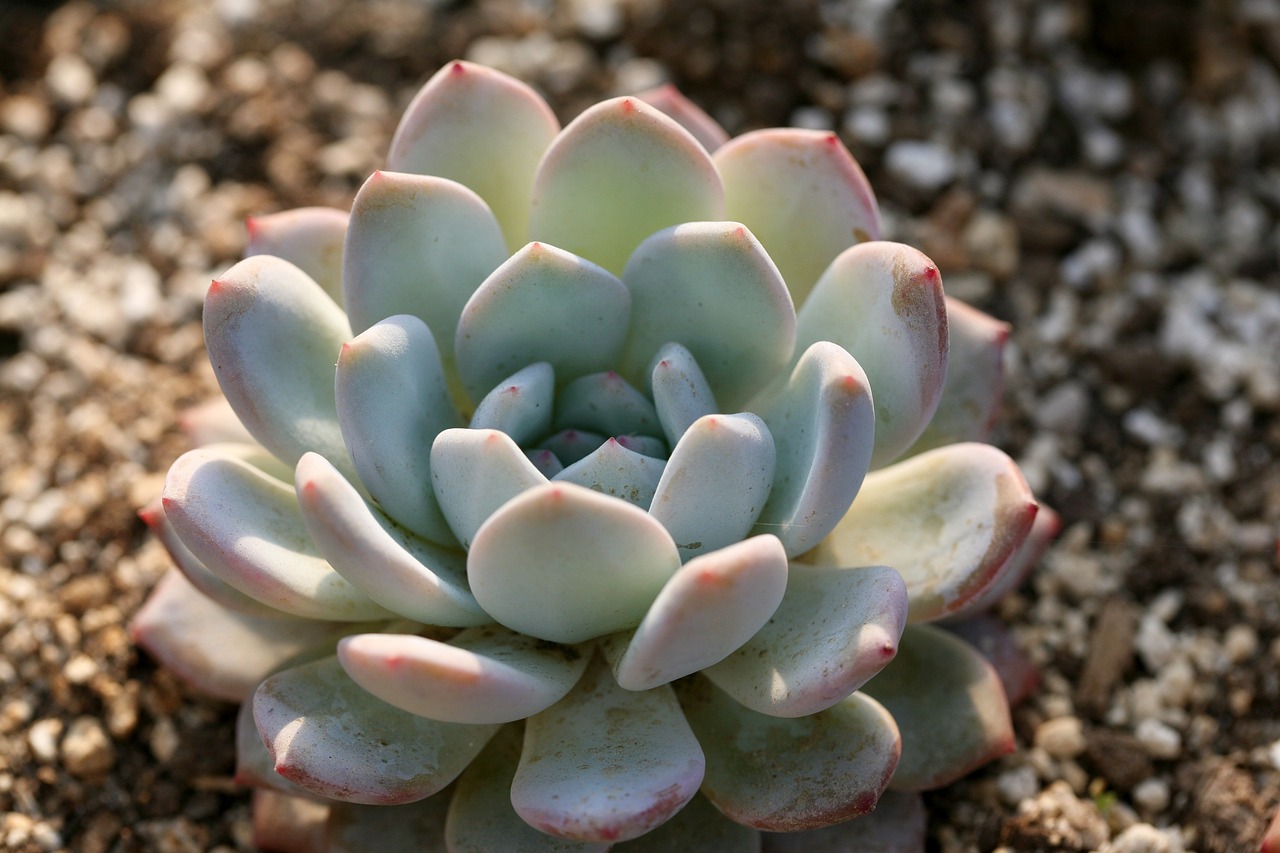
Setting Up Water Propagation
Water propagation is a fascinating and effective method for growing new succulents from existing ones. This technique allows you to observe the roots as they develop, which can be quite rewarding for plant enthusiasts. To get started, you'll need a few basic materials and to create the right environment for your succulents. First, gather some clean, clear containers—glass jars or vases work beautifully because they let you see the roots as they grow. It's essential to choose a container that is not too deep, as succulents prefer shallow water conditions. You’ll also need sharp scissors or a knife for taking cuttings, and, of course, your succulent plant of choice.
When setting up for water propagation, the quality of water you use is crucial. Tap water can contain chemicals that may harm your plants, so consider using distilled or filtered water instead. Fill your container with enough water to submerge the cut end of the succulent without drowning the leaves. The goal is to keep the leaves above the waterline to prevent rot.
Next, you'll want to create a suitable environment for your cuttings. Place your container in a location that receives bright, indirect sunlight. Direct sunlight can be too harsh and may cause the cuttings to wilt or rot. A south or east-facing window is often ideal, but be mindful of the light intensity. If you notice any signs of stress, such as browning leaves, you may need to adjust the light exposure.
As you monitor your cuttings, you'll want to change the water every week or so to keep it fresh. This helps prevent any bacterial growth that could harm your succulent. Additionally, keep an eye out for any signs of growth. After a few weeks, you should start to see roots developing. The timing can vary depending on the succulent species, but patience is key. Once the roots are about 2-3 inches long, it’s time to transition your succulent to soil.
In summary, setting up water propagation is an exciting journey that requires minimal materials but a bit of care and attention. By following these guidelines and providing the right conditions, you’ll be well on your way to growing a thriving collection of new succulents!

Transitioning to Soil
Successfully transitioning your newly rooted succulents from water to soil is a crucial step that can determine their long-term health and growth. Imagine nurturing a tiny plant in water, watching its roots develop like a delicate underwater dance. But as enchanting as this phase is, it’s time to move your succulent into its new home: the soil. The key here is to ensure that this transition is as smooth as possible, so your plant can thrive in its new environment.
First and foremost, timing is everything. You’ll want to wait until your succulent has developed a robust root system—typically, roots should be at least 1 to 2 inches long before making the switch. Think of it like preparing a child for their first day of school; they need to be ready to face the new environment! To check the roots, gently pull the succulent out of the water and inspect the root system. If you see healthy, white roots, you’re ready to proceed.
Next, it’s essential to choose the right potting soil. Succulents thrive in well-draining soil that allows excess moisture to escape, preventing root rot. A mix designed specifically for succulents and cacti is ideal, but you can also create your own blend. Here’s a simple recipe:
| Ingredient | Ratio |
|---|---|
| Potting Soil | 2 parts |
| Perlite or Pumice | 1 part |
| Sand | 1 part |
Once you have your soil ready, it’s time to select a pot. Choose one with drainage holes to ensure excess water can escape. Place a layer of small stones or gravel at the bottom of the pot to further enhance drainage. Now, fill the pot with your soil mix, leaving enough space in the center for your succulent.
Gently remove your succulent from the water and place it in the soil. Be careful not to disturb the roots too much; they are delicate and need to be handled with care. Once it’s in place, cover the roots with soil, ensuring that the base of the plant is just above the soil line. This is crucial because burying the stem too deep can lead to rot. Think of it like tucking a child into bed—snug but not too tight!
After planting, you may be tempted to water your succulent immediately, but hold off for a few days. This allows the roots to adjust to their new environment without the added stress of excess moisture. Instead, place your newly potted succulent in a location with bright, indirect sunlight. This will help it acclimate to its new home.
As your succulent begins to settle into its new soil, keep an eye on its progress. Water it lightly after a week, and gradually increase the frequency based on the plant's needs. Remember, succulents prefer to dry out between waterings, so always check the soil moisture before adding more water. It's a balancing act, much like managing a busy schedule—too much of anything can lead to chaos!
In summary, transitioning your succulent from water to soil is a delicate process that requires patience and care. By timing the transition right, using the appropriate soil, and providing the right conditions, you’ll set your succulent up for a successful and vibrant future. So go ahead, nurture that little plant, and watch it flourish!
- How long should I wait before transitioning my succulent to soil? Wait until the roots are at least 1 to 2 inches long.
- Can I use regular potting soil for succulents? It's best to use a well-draining soil mix designed specifically for succulents and cacti.
- How often should I water my succulent after transitioning to soil? Water lightly after a week, then adjust based on the plant's needs, allowing the soil to dry out between waterings.
Frequently Asked Questions
- What is succulent propagation?
Succulent propagation is the process of creating new plants from existing succulent plants. It can be done through various methods, such as leaf cuttings, stem cuttings, or even water propagation. This not only helps you expand your collection but also allows you to share your plants with friends and family!
- Which succulent varieties are best for beginners?
Some of the best succulent varieties for beginners include Jade Plant, Hen and Chicks, and String of Pearls. These plants are generally hardy, require minimal care, and are quite forgiving, making them perfect for those just starting their succulent journey.
- How do I prepare a leaf cutting for propagation?
To prepare a leaf cutting, gently twist or cut a healthy leaf from the parent plant, ensuring you get the entire leaf base. Allow the cutting to dry and callous for a few days in a shaded area before planting it in soil. This helps prevent rot and encourages healthy root growth!
- Can I propagate succulents in water?
Absolutely! Water propagation is a fun and effective method for succulents. Just place the leaf or stem cutting in water, making sure the bottom is submerged but the leaves are above the waterline. Change the water regularly, and soon you’ll see roots developing!
- When should I transition my succulents from water to soil?
Once your succulent cuttings have developed a robust root system, typically around 2-4 inches long, it’s time to transition them to soil. Be sure to use a well-draining soil mix and handle the roots gently to avoid damage during the transfer.
- How often should I water my newly propagated succulents?
Newly propagated succulents should be watered sparingly. Allow the soil to dry out completely between waterings. A good rule of thumb is to water once every couple of weeks, but always adjust based on your environment and the specific needs of your plants!
- What should I do if my succulent cuttings aren't rooting?
If your cuttings aren't rooting, don’t panic! Check the conditions: ensure they’re in well-draining soil, not overwatered, and getting enough indirect sunlight. Sometimes, it just takes a little more time and patience. Keep an eye on them, and they might surprise you!



















